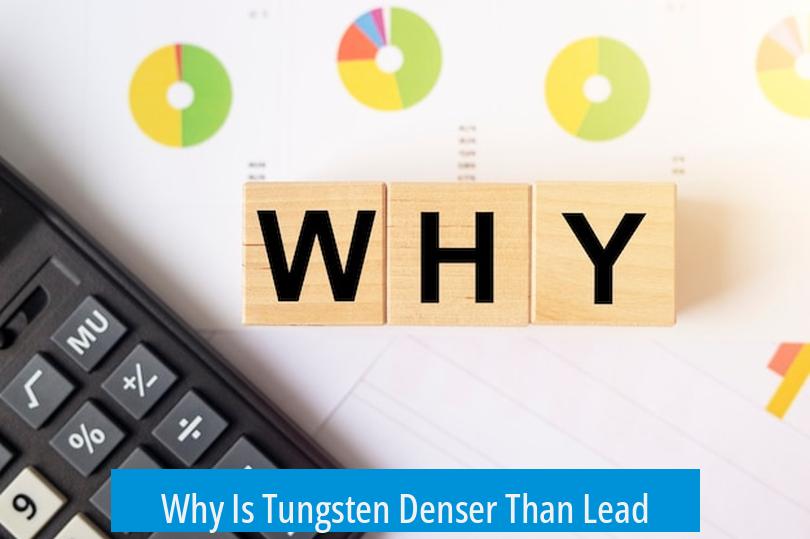Why Is Tungsten Denser Than Lead?

Tungsten is denser than lead mainly because it has a smaller atomic radius while having a comparable atomic mass, resulting in more mass packed into less volume. This difference arises from variations in their electron configurations, atomic sizes, and nuclear charges, which influence how tightly their atoms pack together.
Atomic Size and Electron Shielding
Tungsten’s atomic radius is approximately 135 picometers, much smaller than lead’s 180 picometers. This size difference occurs because tungsten’s electrons mostly occupy d orbitals. These d electrons shield the nuclear charge less effectively than the p electrons found in lead.
Weaker electron shielding means tungsten’s nucleus pulls its electrons closer, shrinking the atom. In contrast, lead’s p electrons provide better shielding, reducing effective nuclear pull and increasing its atomic radius.
Electron Configuration and Shell Filling
- Tungsten (atomic number 74) pulls some of its s electrons into the deeper 5th shell, contributing to a smaller atomic radius.
- Lead (atomic number 82) has filled its 4th shell with f electrons and 5th shell with d electrons, so its outermost s and p electrons remain in the 6th shell, making its atomic radius larger.
The deeper shell occupancy in tungsten tightens electron clouds closer to the nucleus. Lead’s electrons remain in higher shells, resulting in a larger atomic size and less density.
Proton Number and Electronegativity Effects
The total number of protons affects an element’s electronegativity at its innermost shells. Tungsten’s protons exert a stronger pull on its electrons despite partial shielding, causing more compact atoms. Although lead has more protons overall, the outermost electrons feel less pull due to multiple shielding layers, making it less dense.
Additional Factors Influencing Density
- Tungsten is a transition metal with partially filled d orbitals, which influence its bonding and atomic packing.
- Its atoms pack more tightly due to the small atomic radius and strong nuclear attraction.
- Mass per unit volume is higher in tungsten because more mass fits into a smaller volume.
| Element | Atomic Radius (pm) | Density (g/cm3) | Electron Configuration |
|---|---|---|---|
| Tungsten (W) | 135 | 19.3 | [Xe] 4f14 5d4 6s2 (with s-electrons pulled to 5th shell) |
| Lead (Pb) | 180 | 11.34 | [Xe] 4f14 5d10 6s2 6p2 |
Summary of Key Points
- Tungsten’s smaller atomic radius results from poorer shielding by d electrons and deeper shell electron pulling.
- Lead’s larger radius derives from better shielding by p electrons and outer shell electron retention.
- Higher proton pull in tungsten compacts atoms despite fewer protons than lead.
- Tungsten’s transition metal nature and electron configuration promote denser atomic packing.
- Density differences reflect variations in atomic size combined with atomic mass, not just lattice structure.




Leave a Comment